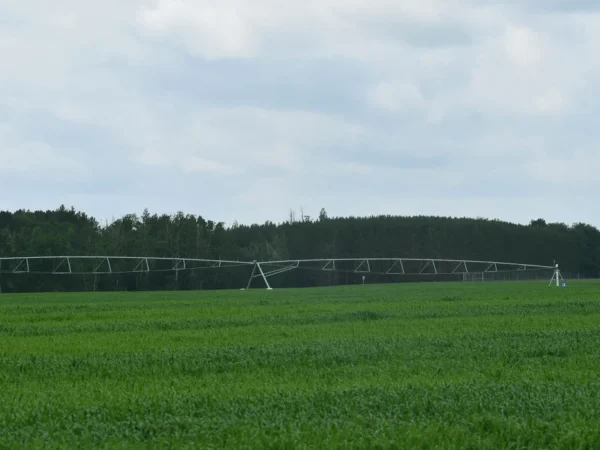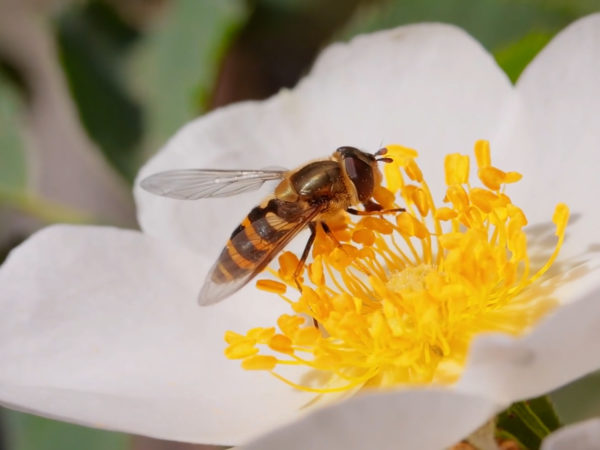
By Timberly Ferree, Indiana Environmental Reporter
Indiana University and Purdue University have each been awarded $1.6 million Environmental Protection Agency research grants to better understand the potential impacts of per- and polyfluoroalkyl substances on water quality and availability in rural communities and agricultural operations across the United States.
PFAS are a group of synthetic chemicals that have been in use since the 1940s in consumer and industrial products and that may be harmful at high levels of exposure.
The EPA grants are part of the agency’s PFAS Action Plan, which outlines concrete steps the EPA is taking to address PFAS and protect public health, according to an EPA Region 5 news release. Georgia Institute of Technology and the University of Georgia received a similar grant.
The IU and Purdue teams will look at major sources of PFAS contamination, fate and transport in rural areas, including exposure risks from private drinking water wells and improved wastewater treatment methods to remove PFAS from water and biosolids that may be used for agricultural purposes.
Jacqueline MacDonald Gibson, principal investigator for the grant and chair of the Department of Environmental and Occupational Health in the IU School of Public Health, said the IU research grant is the first of its kind.
“This will be the first nationwide study seeking to predict why some wells are contaminated with PFAS and others are not,” she said. “We’ll use advanced machine-learning algorithms to try to make these predictions. We are the first to try to apply these methods to predicting PFAS exposures in private wells.”
The IU study will test private well water in four parts of the country, including Indiana.
“We will use methods from artificial intelligence to predict which rural areas in the U.S. are most at risk from PFAS contaminants in private well water,” MacDonald Gibson told Indiana Environmental Reporter. “We then will see how well our algorithms work by comparing the predictions to the amount of PFAS detected in a selection of private wells.”
Areas of testing will include Monroe County, Indiana; Robeson County, North Carolina; Washington County, Minnesota; and Spokane County, Washington.
MacDonald Gibson said her team will collect water samples from 300 wells. She expects to find PFAS in most of them.
“Because PFAS are in widespread use in consumer and industrial products, we expect to find these chemicals in many private wells, perhaps in the majority of them,” she explained. “Most other studies of PFAS in private wells have studied areas around industrial facilities that produce these chemicals. Those studies have found that most wells in the vicinity of the facilities are contaminated.”
Very few studies have looked at PFAS in private wells that are not near industrial sources.
“At the time we wrote our proposal, there were only two such studies, and they were very small. Both found that about half the wells had detectable PFAS,” MacDonald Gibson said.
Purdue University Professor of Agronomy Linda Lee told IER that the overall goal is to address key data gaps in the understanding of PFAS occurrence and fate in rural landscapes and agricultural operations and their impacts on rural water supplies and agricultural products.
“We propose a combination of field, laboratory and modelling activities to evaluate primarily the relative impact on rural water resources of irrigating with PFAS containing treated effluents and land application of biosolids,” Lee said of the Purdue team’s research. “We also want to evaluate how PFAS movement is affected in the unsaturated zone and the significance of precursors on production of the more mobile PFAS.”
The focus will be on evaluating how treated effluent irrigation and land-applied biosolids contribute to PFAS in rural water supplies relative to other sources including industries, solar panels and landfills.
The study will be conducted in Indiana, Pennsylvania and Virginia.
“We hope that this combined measured and modelling approach will identify landscape, hydrologic and soil characteristics that are most appropriate for receiving biosolids or treated wastewater with minimal impact to water and crop resources,” Lee said. “This research couples well to the work proposed by the IU team, and we are excited to collaborate throughout the project period.”
The studies will use an integrated modelling approach by comparing modelling predictions to private well samples collected nationwide through a citizen-science campaign using mail-out test kits. The research is expected to substantially improve the accuracy of risk predictions and to facilitate informed risk management decisions.
Also read the article here at the Indiana Environmental Reporter website.
Catch up with other PFAS headlines and news from Great Lakes Now:
PFAS News Roundup: PFAS in fast food packaging, every Madison well
Coping with PFAS: How have families been dealing with PFAS contamination in their communities
PFAS Progress: Michigan continues legislative push for more action against PFAS
API key not valid. Please pass a valid API key.Featured image: Ohio farm (Great Lakes Now Episode 1016)




